An important European private collection of rhinoceros horn objects at Bonhams Hong Kong, 30 may 2017
Photo: Bonhams.
Lot 129. A rhinoceros horn 'lotus leaf' libation cup, 17th-18th century, 10.4cm (4 1/8in) wide. Estimate HK$ 100,000 - 150,000 (€12,000 - 18,000). Sold for HK$ 212,500 (€ 22,574). Photo: Bonhams.
Naturalistically worked in the form of a curled lotus leaf issuing from a stem forming the foot at the base, one side flanked by another curved lotus leaf forming the handle, the horn of a dark chocolate-brown tone.
Provenance: An important European private collection
Note: The present lot is an exceptional example displaying the technical prowess and creativity achieved by the master carver in rendering the rhinoceros horn into an exquisite naturalistic form of a lotus leaf, different from the more typical portrayal of the lotus leaf in rhinoceros horn libation cups.
Compare a related larger rhinoceros horn 'lotus and crab' libation cup, 17th century, illustrated by T.Fok, Connoisseurship of Rhinoceros Horn Carving in China, Hong Kong, 1999, pl.86, which was later sold at Sotheby's Hong Kong, 8 October 2013, lot 3248.
A rhinoceros horn 'lotus and crab' libation cup, 17th century. Sold 1,240,000 HKD at Sotheby's Hong Kong, 8 October 2013, lot 3248. Photo: Sotheby's.
Lot 130. A rhinoceros horn 'melon' libation cup, 17th-18th century, 6.8cm (2 5/8in) wide. Estimate HK$ 100,000 - 150,000 (€12,000 - 18,000). Sold for HK$ 650,000 (€ 69,052). Photo: Bonhams.
Naturalistically carved in the shape of a half melon, supported on intertwined leafy vines issuing further smaller melons forming the base and handle, extending and hanging in relief over the interior, the horn of a honey-brown tone.
Provenance: An important European private collection
Note: The present lot is a feat of carving, successfully transforming the prized horn into naturalistic curly leafy vines bearing ripening melons. As melons grow on vine, known as wan (蔓), forming a rebus with wan (萬) meaning ten-thousand, and have a large number of seeds, they came to represent the auspicious wish for fertility and producing many offspring.
See a related rhinoceros horn melon-shaped libation cup, in the Chester Beatty Library, Dublin, illustrated by J.Chapman, The Art of Rhinoceros Horn Carving in China, London, 1999, pls.225-226; compare also two related rhinoceros horn libation cups shaped as half melons, 18th century and 17th century, illustrated by T.Fok, Connoisseurship of Rhinoceros Horn Carving in China, Hong Kong, 1999, pls.99 and 105; the former sold at Christie's Hong Kong, 27 May 2008, lot 1701, and the latter sold at Christie's Paris, 14 December 2011, lot 28.
A fine and rare small melon-form rhinoceros horn cup, China, late Ming-early Qing dynasty, 17th century. Price realised EUR 61,000 (USD 79,686) at Christie's Paris, 14 December 2011, lot 28. © Christie's Image Ltd 2011
A related rhinoceros horn 'melon' libation cup, signed Yi Ru, Kangxi, was sold at Sotheby's Hong Kong, 8 October 2013, lot 3179.
A rare rhinoceros horn 'melon' libation cup, signed Yi Ru, Qing dynasty, Kangxi period. Sold 2,680,000 at Sotheby's Hong Kong, 8 October 2013, lot 3179. Photo: Sotheby's.
Lot 131. A rare and large rhinoceros horn 'rocky landscape' libation cup, 17th century, 17.6cm (6 7/8in) long. Estimate HK$ 350,000 - 400,000 (€41,000 - 47,000). Sold for HK$ 2,700,000 (€ 286,834). Photo: Bonhams.
The deeply carved vessel of flared form, the well-delineated rim above angular rocky outcrops, partly obscured by ruyi-shaped cloud scrolls, with a lone sage seated on the graduated stepped ground by a swirling stream with its source at the base and flowing around the cup, amongst wutong and cypress trees, all below two large pine forming the handle with further gnarled branches and pine-needles emerging through the interior in high relief, the horn of dark chocolate-brown tone.
Provenance: An important European private collection
Note: The current composition of a lone scholar gazing into the distant landscape embodies the ideals of scholarly reclusion, popular with the 17th century literati. The multi-layered carving beautifully displayed from the swirling stream to the craggy outcrops exhibits masterful craftsmanship, deserved by the noteworthy size and considerable weight of this rhinoceros horn libation cup.
For related examples of rhinoceros horn libation cups, carved with mountainous landscape, 17th century, see T.Fok, Connoisseurship of Rhinoceros Horn Carving in China, Hong Kong, 1999, pls.137, 143 and 167; and see another example, in the Metropolitan Museum of Art, New York, illustrated by J.Chapman, The Art of Rhinoceros Horn Carving in China, London, 1999, pl.289.
See a rhinoceros horn libation cup, late Ming/early Qing dynasty, carved with the subject of 'Ode to the Red Cliff', sold in these rooms, 25 May 2011, lot 458; and compare another related cup, 17th/18th century, carved with rocky outcrops, pine and river, which was sold at Sotheby's Hong Kong, 8 October 2014, lot 3783.
A large rhinoceros horn 'Pine and River' libation cup, Qing dynasty, 17-18th century. Sold 1,720,000 HKD at Sotheby's Hong Kong, 8 October 2014, lot 3783. Photo: Sotheby's.
Lot 132. A very rare rhinoceros horn 'Shoulao and Eight Immortals' libation cup, 17th century, 13.9cm (5 1/2in) long. Estimate HK$ 200,000 - 250,000 (€23,000 - 29,000). Sold for HK$ 687,500 (€ 73,036). Photo: Bonhams.
Superbly carved as a veined lotus leaf, carved on the exterior in relief with Shoulao, the God of Longevity, flanked by a deer and a monkey and below a crane in flight, surrounded by the Eight Immortals, each holding his respective attribute, all below relief carved ruyi-shaped clouds, raised on an openwork base in the form of lotus tendrils, the interior with lotus-leaf veins, the horn of dark honey-brown tone.
Provenance: An important European private collection
Note: The carving of the Immortals in high relief reserved against the lotus leaf, is further accentuated by the reticulated and pierced base on which the figures are raised, demonstrating the virtuosity of the master carver.
Compare related rhinoceros horn libation cups, similarly carved with the Daoist Immortals, 17th century, in the Osaka Municipal Museum, and in the Chester Beatty Library, illustrated by J.Chapman, The Art of Rhinoceros Horn Carving in China, London, 1999, pls.266 and 270-271; see also the cup illustrated by T.Fok, Connoisseurship of Rhinoceros Horn Carving in China, Hong Kong, 1999, pl.82. For a related rhinoceros horn libation cup, early Qing dynasty, carved with the Eight Immortals, from the Qing Court collection, see The Complete Collection of Treasures of the Palace Museum: Bamboo, Wood, Ivory and Rhinoceros Horn Carvings, Hong Kong, 2002, pl.148.
The figures represented on the exterior of the rhinoceros horn cup are Shoulao and the Eight Immortals, a group of legendary deities depicted in Chinese Daoist mythology, consisting of Lu Dongbin, He Xiangu, Lan Caihe, Zhang Guolao, Han Xiangzi, Zhong Liquan, Li Tieguai and Cao Guojiu. Together they form the auspicious pun representing wishes for longevity, baxian pengshou (八仙捧壽). This subject matter would have been suitable for a birthday celebration.
See a related rhinoceros horn 'Eight Immortals' libation cup, early 17th century, which was sold at Christie's Hong Kong, 28 November 2012, lot 2165; another related example, 17th century, was sold at Christie's New York, 15 September 2011, lot 1233.
A carved rhinoceros horn 'Eight Immortals and Shoulao' libation cup, Ming dynasty, early 17th century. Price realised HKD 1,340,000 (USD 173,744) at Christie's Hong Kong, 28 November 2012, lot 2165. © Christie's Images Ltd 2012
A very rare 'Eight Immortals' rhinoceros horn cup. 17th century. Price realised USD 290,500 at Christie's New York, 15 September 2011, lot 1233. © Christie's Images Ltd 2011
Lot 133. A very rare rhinoceros horn 'Zhang Qian' libation cup, 17th-18th century, 6.8cm (2 5/8in) wide. Estimate HK$ 200,000 - 300,000 (€23,000 - 35,000). Sold for HK$ 750,000 (€ 79,676). Photo: Bonhams.
Superbly carved to the interior with a high-relief seated figure of Zhang Qian holding a book in his right hand within the deep lotus-leaf shaped cup, the exterior carved in relief with two confronted winged luduan amidst musk mallow reaching over the rim and borne on gnarled branches, with two bamboo also forming the reticulated circular foot ring, the horn of dark amber-brown tone.
Provenance: An important European private collection
Note: Zhang Qian, born in Chenggu district in the north central part of Shaanxi Province, was an official and diplomat who served as an Imperial envoy during the Han dynasty under Emperor Wu. He was reputedly the first diplomat to have brought back reliable information about Central Asia. He played an integral role in the conquest of the region now known as Xinjiang, and is credited with playing a key role in opening China to the world of commercial trade and major trade routes such as the Silk Road.
It is exceptionally rare for a high-relief figure to be carved in the interior of a rhinoceros libation cup as this would have required a particularly thick-walled horn and a significant loss of the prized horn carved around the figure; however, for a related example with a Zhang Qian figure carved within the cup, see J.Chapman, The Art of Rhinoceros Horn Carving in China, London, 1999, pl.293.
Figures of Zhang Qian in rhinoceros horn are more prevalent within the form of a raft and occasionally in brushrest form, examples of which can be found in important museum and private collections: see four examples from the Qing Court collection, late Ming dynasty, two of which are carved with the marks of You Tong and You Leifu, illustrated in The Complete Collection of Treasures of the Palace Museum: Bamboo, Wood, Ivory and Rhinoceros Horn Carvings, Hong Kong, 2002, pls.118-120 and 122; see also the Shanghai Museum, the Harvard University Art Museums, the collections of Dora Wong, Angela Chua and Franklin Chow, illustrated by T.Fok, Connoisseurship of Rhinoceros Horn Carving in China, Hong Kong, 1999, pls.70-74; and from the Asian Art Museum of San Francisco, the Gerard Levy collection, Paris, the Asian Civilisations Museum, Singapore, the Kneib collection, the Gerard Arnhold collection, Brazil, and Durham University Oriental Museum, illustrated by J.Chapman, The Art of Rhinoceros Horn Carving in China, London, 1999, pls.48, 50-52, 105 and 293.
A rhinoceros horn 'log raft' vessel, 17th century, carved with Zhang Qian, was sold at Sotheby's Hong Kong, 8 October 2013, lot 3239.
A rare rhinoceros horn 'log raft' vessel, 17th century. Sold 9,040,000 HKD at Sotheby's Hong Kong, 8 October 2013, lot 3239. Photo: Sotheby's.
(Cf. my post: A rare rhinoceros horn 'log raft' vessel, 17th century)
Lot 134. An exceptionally rare rhinoceros horn 'champion' vase, 17th-18th century, 9.7cm (3 7/8in) high. Estimate HK$ 140,000 - 160,000 (€16,000 - 19,000). Sold for HK$ 725,000 (€ 77,020). Photo: Bonhams.
Superbly carved in the form of two tapering conjoined cylindrical vessels raised on waisted feet, carved around the exterior with a central band of archaistic kui dragons between a key-fret border around and over the rim and foot, and above a band of petal panels, the front carved in high relief with a winged eagle above a chi dragon with its rounded body well carved to the underside, the handle carved in the form of the eagle's tail feathers decorated at the top with a taotie mask above the beast's hindquarters, the interior and bases plain, the horn of chocolate-brown tone.
Provenance: An important European private collection
Note: Vases of this form are known as 'champion vases', which refers to the vessel's twin-tubular compartments connected by an eagle (ying) and a bear (xiong), together forming the pun yingxiong 'champion' or 'hero', which means to invoke conjugal happiness.
In form, the vase was inspired by earlier bronzes, such as the Tang dynasty 'champion' vase depicted in the Xiqing Gujian, 1751, illustrated by M.Wilson, Chinese Jades, London, 2004, p.106, pl.107, which itself draws on Western Han dynasty examples. Similarly, in design the use of the kui dragons harks back to those decorating late Shang dynasty archaic bronze ritual vessels; the representation of antiquity was meant to advocate associated qualities of the ancient culture such as sincerity, simplicity and happy exuberance.
This form is particularly rare in rhinoceros horn; however, related rhinoceros horn 'champion' vases can be found in important museum and private collections: see a late Ming dynasty example of faceted form, illustrated in The Complete Collection of Treasures of the Palace Museum: Bamboo, Wood, Ivory, and Rhinoceros Horn Carving, Hong Kong, 2002, pp.149-150, pl.132; another 'champion' vase, 18th century, in the Florence and Herbert Irving collection, the Metropolitan Museum of Art, New York, acc.no.2015.500.6.15; two further examples, 18th century, in the collection of Dora Wong and the Shanghai Museum, respectively, are illustrated by T.Fok, Connoisseurship of Rhinoceros Horn Carving in China, Hong Kong, 1999, pp.90-91, nos.43 and 44 (with Jin Fu Baochang and Tiancheng gongzhi marks); and another 'champion' vase, in the Museum voor Volkenkunde, Rotterdam, see J.Chapman, The Art of Rhinoceros Horn Carving in China, London, 1999, p.101, pl.88.
Rhinoceros horn 'champion' vase, Ming dynasty. Image courtesy of the Palace Museum, Beijing.
Rhinoceros horn double vase with bird and bear, also known as a “Champion vase”, 18th century, Qing dynasty (1644–1911), Qianlong period (1736–95). Gift of Florence and Herbert Irving, 2015, 2015.500.6.15 © 2000–2017 The Metropolitan Museum of Art.
Champion vases were popular during the 17th and 18th centuries and were produced in other materials including jade, bronze, cloisonné enamel and porcelain. See a rare gilt-bronze and cloisonné enamel 'champion' vase and cover, 18th century, which was sold in these rooms, 3 December 2015, lot 15; a jade example, Qianlong, in the National Palace Museum, Taipei, is illustrated in The Refined Taste of the Emperor: Special Exhibition of Archaic and Pictorial Jades of the Ch'ing Court, Taipei, 1997, pl.17.
Lot 135. A very rare rhinoceros horn 'scholar and attendant' libation cup, 17th century, 14cm (5 1/2in) high. Estimate HK$ 500,000 - 700,000 '€47,000 - 82,000). Sold for HK$ 250,000 (€ 26,558). Photo: Bonhams.
Of tall and well-hollowed flared form, carved in high relief with two gnarled pine trees, their branches forming the handle and extending over the rim carved with crags, flanked to one side by a sage seated with legs crossed cooling in a flowing stream below the overhanging pine and by a wutong tree, gazing in the distance at the rocky outcrops covered with vine tendrils, the other side with an attendant carrying a bundle beside a bridge over a swirling stream flowing from the base, the horn of amber-brown tone.
Provenance: An important European private collection
Note: The carving of the present lot is particularly bold in the large portrayal of the figures and meticulous attention to the depiction of their facial expressions and clothing. The contrasting scene is set by the comparison between the scholar, seated with legs crossed, his robe raised to avoid getting it wet, cooling his feet dangling in the nearby stream, whilst his attendant, going uphill, is shouldering what appears to be a heavy bundle of firewood.
The humorous design, seen through the eyes of the literati for whom this exceptional cup would have been made, demonstrates an unusually large degree of freedom of creativity practiced by the master carver.
Compare two related rhinoceros horn libation cups, 17th century, with figural sage carvings, from the Angela Chau and Chun-hung Li collections, illustrated by T.Fok, Connoisseurship of Rhinoceros Horn Carving in China, Hong Kong, 1999, pls.150 and 166.
Lot 136. A very rare rhinoceros horn archaistic 'zoomorphic' pouring vessel, 17th-18th century, 13.9cm (5 1/2in) long. Estimate HK$ 250,000 - 400,000 (€29,000 - 47,000). Sold for HK$ 1,000,000 (€ 106,234). Photo: Bonhams.
Superbly carved in the form of a winged mythical beast raised on four spreading clawed feet, the horned head pierced to form a spout, the mane formed from relief-carved ruyi-shaped scrolls, the bifurcated tail forming the handle, the horn of a rich chocolate-brown tone.
Provenance: Harry G. Beasley (1881-1939), acquired on 18 October 1918 (label)
An important European private collection
Notes: Harry Geoffrey Beasley was a wealthy brewery owner whose private collecting passion began when, aged 13, he bought two Solomon Island clubs. In 1914 he was elected to the Royal Anthropological Institute with which he maintained an association until 1937. He and his wife, Irene, established the Cranmore Ethnographic Museum in Chislehurst, Kent where they had moved in 1928, compiling the Cranmore Index of Pacific Material Culture based on James Edge-Partington's Index for the British Museum and forming a considerable library. Although the Beasleys collected artefacts from all around the world – including Africa (particularly Benin), North-west America and Asia - their main focus was the Pacific. Objects were acquired from dealers, missionaries and from, or in exchanges with, various museums. Beasley's comprehensive monograph on Oceanic fish-hooks was published in 1928. The Cranmore Museum was damaged by bombing in the Second World War and in accordance with Beasley's will his widow, Irene, offered the first selection of the collection (apart from a limited reservation for herself) as a donation to the British Museum. The gift of several thousand items became fully effective in 1944. Other named beneficiaries include the Pitt-Rivers Museum, Oxford; The Museum of Archaeology and Anthropology, University of Cambridge; and National Museums, Scotland.
H.G. Beasley
This exquisitely carved rhinoceros horn pouring vessel is exceptionally rare in form and design and no other similar example would appear to have been published.
Compare, however, a related rhinoceros horn bird-shaped pouring vessel, 17th century, with the beak forming the spout, in the Harvard University Art Museums, illustrated by T.Fok, Connoisseurship of Rhinoceros Horn Carving in China, Hong Kong, 1999, pl.174. See also a related rhinoceros horn four-legged pouring vessel, 17th/18th century, but without a hollowed spout, formerly in the Robert H. Blumenfield collection, which was sold at Christie's New York, 25 March 2010, lot 882.
An unusual rhinoceros horn four-legged pouring vessel, 17th-18th century. Price realised USD 158,500 at Christie's New York, 25 March 2010, lot 882. © Christie's Images Ltd 2010
Lot 137. A rare archaistic rhinoceros horn libation cup, Ru yu two-character mark, 17th-18th century, 14.9cm (5 7/8in) wide. Estimate HK$ 150,000 - 250,000 (€18,000 - 29,000). Sold for HK$ 937,500 (€ 99,595). Photo: Bonhams.
Finely carved to the exterior with two taotie masks below a key-fret band on either side of the flared rim, the handle formed by an adult and young sinuous chi dragons climbing over the rim, with a further chi dragon clambering up one side, raised on a ridged flared foot, the base relief-carved with a two-character Ru yu ('like jade') zhuanshu seal mark, the horn of a rich honey-brown tone.
Provenance: An important European private collection
Notes: The present lot draws its inspiration in form and in the taotie-mask design from archaic bronze vessels of the late Shang and Western Zhou dynasty, symbolising the virtues of ancient times.
This rhinoceros horn libation cup demonstrates the consummate skill of the carver, with the multi-layered carving and naturalistic chi dragons. The adult dragon is unusually carved with twin horns, his prowess demonstrated in the clawed feet holding onto the rim. The bronze-inspired form is superbly carved with elegant raised ridges around the foot and in the interior. Rarely are rhinoceros horn libation cups carved with inscriptions; in some instances, such inscriptions denote the name of the carver or (as in the case of the present lot) a commendation mark is carved.
Related archaistic rhinoceros horn libation cups are in important museum and private collections: see the example from the Qing Court collection, illustrated in The Complete Collection of Treasures of the Palace Museum: Bamboo, Wood, Ivory and Rhinoceros Horn Carvings, Hong Kong, 2002, p.151, pl.133 (late Ming dynasty); see another libation cup also from the Staatliches Museum für Völkerkunde, Munich, illustrated by J.Chapman, The Art of the Rhinoceros Horn Carving in China, London, 1999, p.152, pl.184; and another example, 17th century, illustrated by T.Fok, Connoisseurship of Rhinoceros Horn Carving in China, Hong Kong, 1999, pls.18 (with Shang Ming mark), and 41 (with Hu Xingyue mark); while a further example, late Ming dynasty, is illustrated in Ming and Qing Chinese Arts from the C.P. Lin Collection, Hong Kong, 2014, pl.167.
Compare a related archaistic rhinoceros horn libation cup, 17th century, sold in our San Francisco rooms, 20 December 2011, lot 8171; two other related examples, 17th/18th and 18th century, respectively, sold in our London rooms, 10 November 2011, lot 433 and 16 May 2013, lot 361; and a further related libation cup, 17th century, was sold in these rooms, 26 May 2014, lot 122.
Lot 138. A rare rhinoceros horn archaistic tripod libation cup, jue, 18th century, 15.2cm (6in) long. Estimate HK$ 140,000 - 160,000 (€16,000 - 19,000). Sold for HK$ 1,250,000 (€ 132,793). Photo: Bonhams.
Exquisitely worked in the form of an archaistic wine vessel, jue, the cup of flared form raised on three plantain-shaped spreading legs, the body superbly carved in low relief with a central register enclosing two taotie masks formed of pairs of confronted stylised kui dragons, reserved on a leiwen ground, below a band of upright-cicada blades and a key-fret border around and on the rim as well as framing the ridged feet each issuing from the jaws of a taotie mask and terminating in a leaf, with a pierced scroll-shaped twin handle supporting a chi dragon clambering over the rim, flanked by two further young dragons clambering over each side, the horn of a dark coffee-brown tone.
Provenance: An important European private collection
Notes: The present lot is exquisitely carved, combining superb low and high relief carving techniques, demonstrating the finest level of rhinoceros horn carving achieved during the 18th century. The archaic inspiration is consistent with the Qianlong emperor's wishes to 'restore the ancient ways', reinstating the intrinsic qualities of simplicity, sincerity and happy exuberance of the ancient cultures. For this purpose, the emperor instructed the Court to collect drawings of antiquities, such as the 'Catalogue of Xiqing Antiquities' (Xi Qing Gu Jian 西清古鑑), which served as a source of designs for the production of contemporary vessels; see Chang Li-tuan, The Refined Taste of the Emperor: Special Exhibition of Archaic and Pictorial Jades of the Ch'ing Court, Taipei, 1997, pp.49-50.
Compare a related rhinoceros horn, jue, mid-Qing dynasty, illustrated in The Complete Collection of Treasures of the Palace Museum: Bamboo, Wood, Ivory and Rhinoceros Horn Carvings, Hong Kong, 2002, pl.205; for another related jue, 18th century, in the Harvard University Art Museums, see T.Fok, Connoisseurship of Rhinoceros Horn Carving in China, Hong Kong, 1999, pl.36.
See a related rhinoceros horn tripod libation cup, jue, 17th/18th century, which was sold in our San Francisco rooms, 13 December 2010, lot 5065; and another jue, with upright loop handles, 17th century, which was sold at Christie's London, 10 May 2011, lot 6.
A very rare rhinoceros horn tripod libation cup, jue, 17th century. Price realised GBP 217,250 (USD 355,204) at Christie's London, 10 May 2011, lot 6. © Christie's Images Ltd 2011
Lot 139. A rare rhinoceros horn 'magnolia, birds and apricot blossom' libation cup, 17th-18th century, 19cm (7 1/2in) long. Estimate HK$ 200,000 - 300,000 (€23,000 - 35,000). Sold for HK$ 1,437,500 (€ 152,712). Photo: Bonhams.
The full-tipped horn intricately carved as a large magnolia blossom with overlapping petals borne on flowering and budding apricot openwork branches, with two long-tailed birds chasing each other in flight, the horn of dark honey and amber-brown tone.
Provenance: An important European private collection
Notes: Apricot blossoms symbolise the Apricot Grove: the Tang dynasty Imperial garden where the banquet for successful candidates of the Palace examinations was held. Swallows symbolise Spring when the banquet was held, and the character itself is also a pun for 'banquet' or yan (宴). Apricot blossoms or xinghua (杏花) and swallows or yan (燕) form the saying 'may you attend the spring banquet in the Apricot Grove' or xinglin chunyan (杏林春燕), which conveys the auspicious meaning of 'wishing a candidate success in the Imperial examination'.
Related rhinoceros horn libation cups utilising the full horn, with a primary flower or leaf borne on gnarled flowering branches, can be seen in a number of variations: see a mallow-shaped libation cup, early Ming dynasty, from the Qing Court collection, illustrated in The Complete Collection of Treasures of the Palace Museum: Bamboo, Wood, Ivory and Rhinoceros Horn Carvings, Hong Kong, 2002, pl.109; for a cup carved with nandina and narcissus, in the Chester Beatty Library, and another carved with lotus leaf and water plants, in Snowshill Manor, Worcester, see J.Chapman, The Art of Rhinoceros Horn Carving in China, London, 1999, pls.198 and 210; and see a cup with lotus and chi-dragon, in the Arthur M. Sackler collection, and two others of lotus form, illustrated by T.Fok, Connoisseurship of Rhinoceros Horn Carving in China, Hong Kong, 1999, pls.92, 95 and 96.
Compare a related larger rhinoceros horn 'cranes' libation cup, 18th century, which was sold in our London rooms, 6 November 2014, lot 416; and see also another related example of a rhinoceros horn 'lotus' libation cup, 17th century, which was sold at Christie's Paris, 14 December 2011, lot 206.
Coupe libatoire en corne de rhinocéros sculptée, Chine, fin de la dynastie Ming-début de la dynastie Qing, XVIIème siècle. Prix réalisé EUR 133,000 (USD 173,742) à Christie's Paris, 14 décembre 2011, lot 206. © Christie's Images Ltd 2011
Lot 140. A rare carved rhinoceros horn 'dragon' seal, 17th-18th century, 5.3cm (2 1/8in) high. Estimate HK$ 80,000 - 120,000 (€9,400 - 14,000). Sold for HK$ 237,500 (€ 25,230). Photo: Bonhams.
Of oval form, surmounted by a sinuous coiled five-clawed dragon with its head raised high, its left front claws grasping a flaming pearl, the base deftly carved with a four-character zhuanshu seal mark..
Provenance: Roger Keverne Ltd., London, Summer Exhibition, 2002, no.142
A European private collection, and thence by descent
Notes: The seal mark reads huafeng sanzhu and is an auspicious Chinese idiom, which means 'as far-reaching as the edges of Chinese heritage, bearing three auspicious wishes of longevity, wealth and many male offspring'.
Among all forms of rhinoceros horn carvings, scholarly seal carvings are very rare. Compare a rhinoceros horn seal carved with a mythical-beast finial, Ming dynasty, illustrated by J.Chapman, The Art of Rhinoceros Horn Carving in China, London, 1999, p.117, no.118, which was later sold at Sotheby's Hong Kong, 23 October 2005, lot 82; see also a related example illustrated by Sydney L. Moss, Ltd., Documentary Chinese Art in the Scholars' Taste, London, 1983, no.139.
Compare a related rhinoceros horn seal with a xiezhi finial, 16th/17th century, which was sold at Sotheby's Hong Kong, 8 October 2010, lot 2210.
A rhinoceros horn seal with a xiezhi finial, Ming dynasty, 16th-17th century. Sold 2,420,000 HKD at Sotheby's Hong Kong, 7 October 2010, lot 2210. Photo: Sotheby's.
Bonhams. FINE CHINESE CERAMICS AND WORKS OF ART, 30 May 2017, 15:00 HKT, HONG KONG, ADMIRALTY

/https%3A%2F%2Fprofilepics.canalblog.com%2Fprofilepics%2F1%2F0%2F100183.jpg)
/https%3A%2F%2Fstorage.canalblog.com%2F03%2F02%2F119589%2F96711876_o.jpg)
/https%3A%2F%2Fstorage.canalblog.com%2F11%2F31%2F119589%2F94773502_o.jpg)
/https%3A%2F%2Fstorage.canalblog.com%2F20%2F83%2F119589%2F94772815_o.jpg)
/https%3A%2F%2Fstorage.canalblog.com%2F26%2F72%2F119589%2F75604929_o.jpg)
/https%3A%2F%2Fstorage.canalblog.com%2F59%2F60%2F119589%2F26458628_o.jpg)





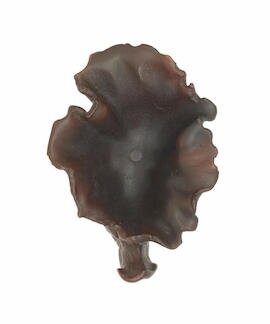

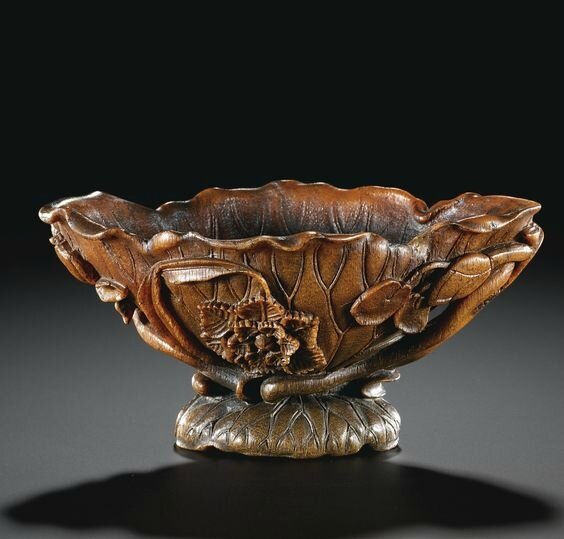




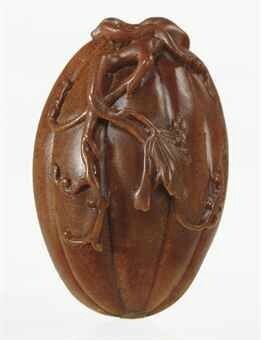


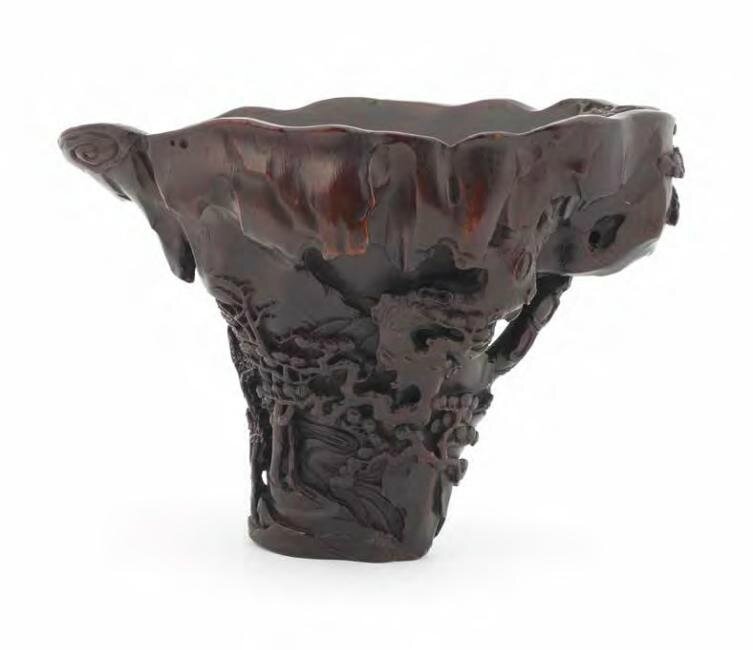


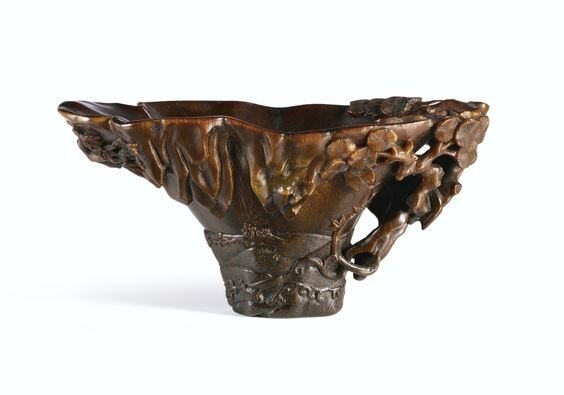
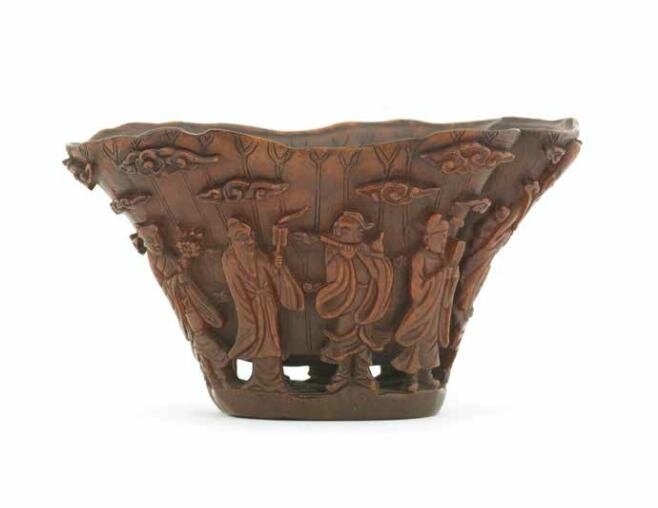

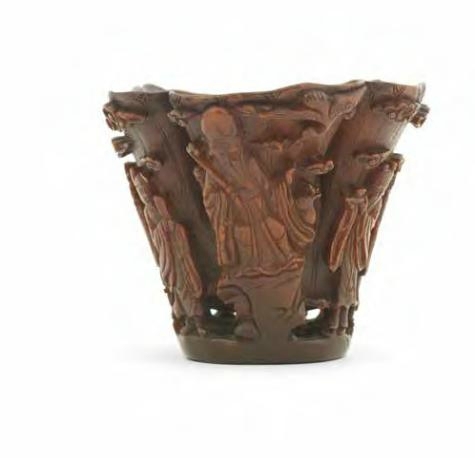

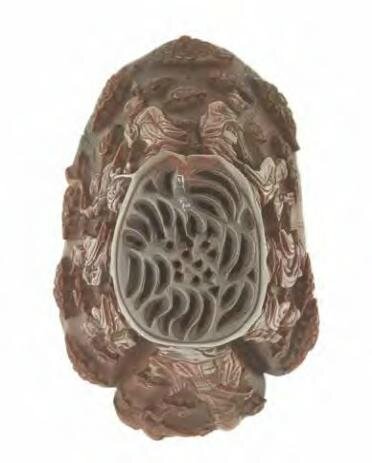

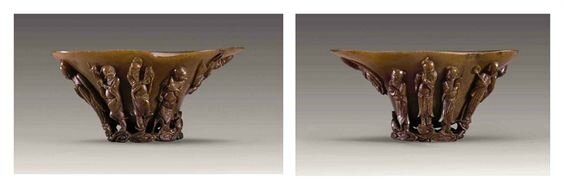
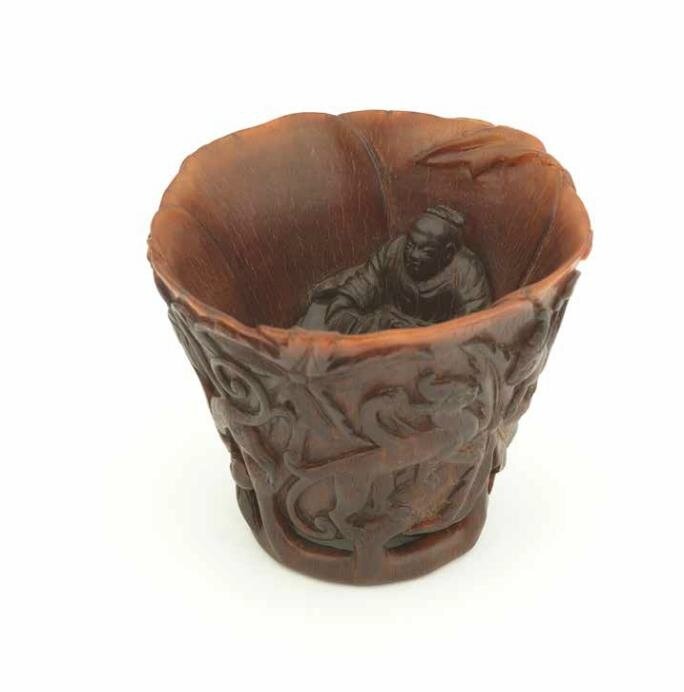



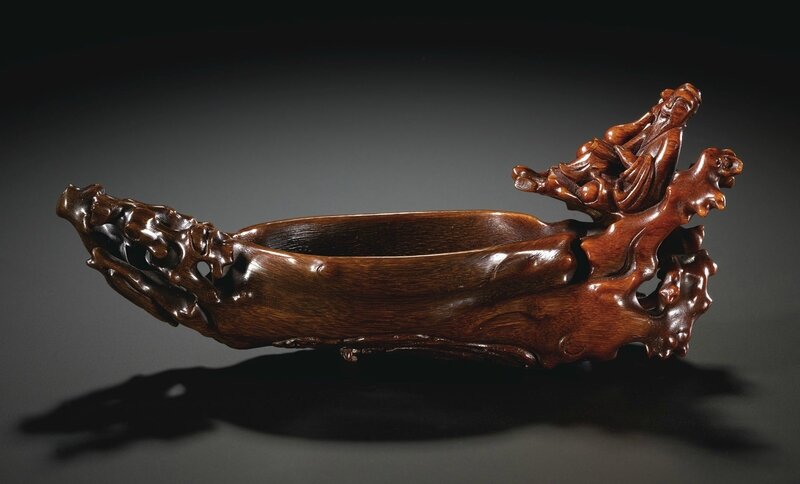

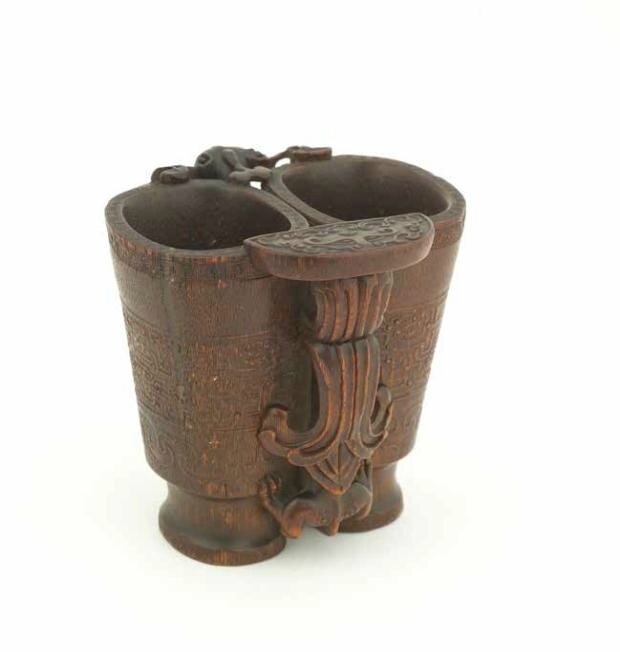

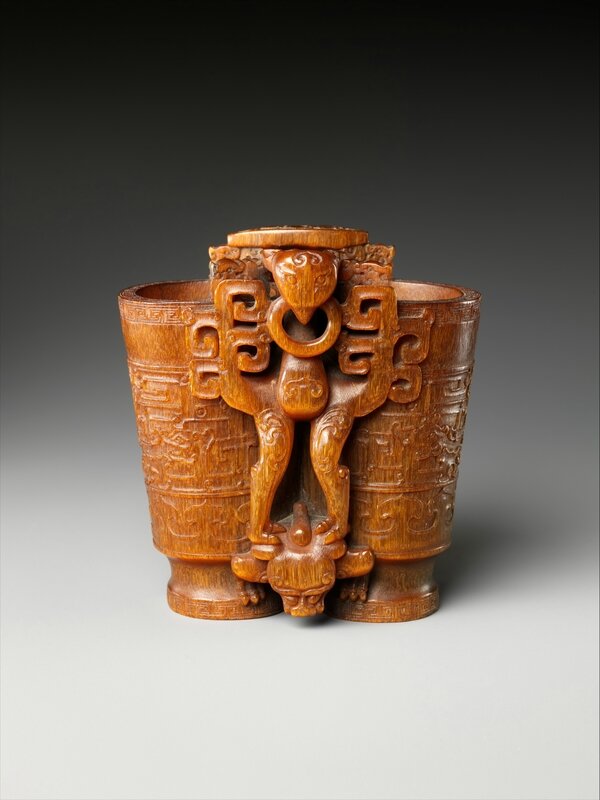
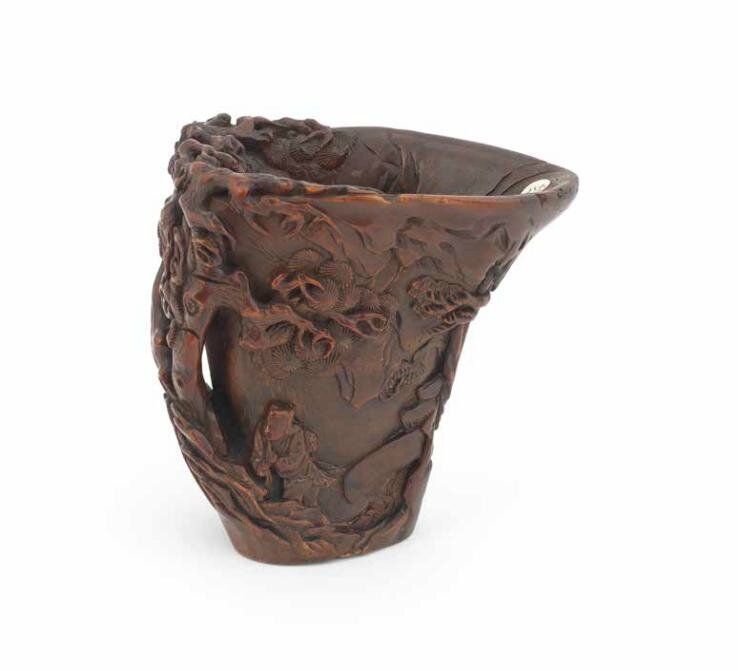
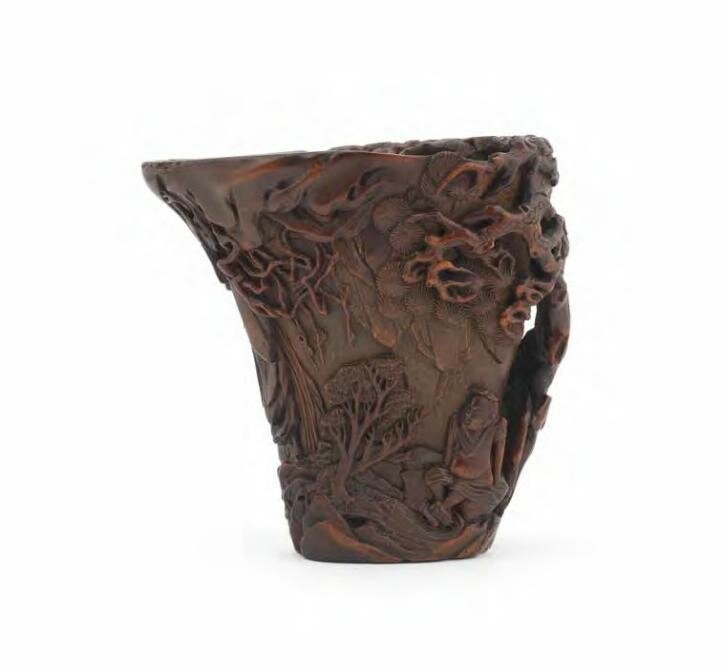
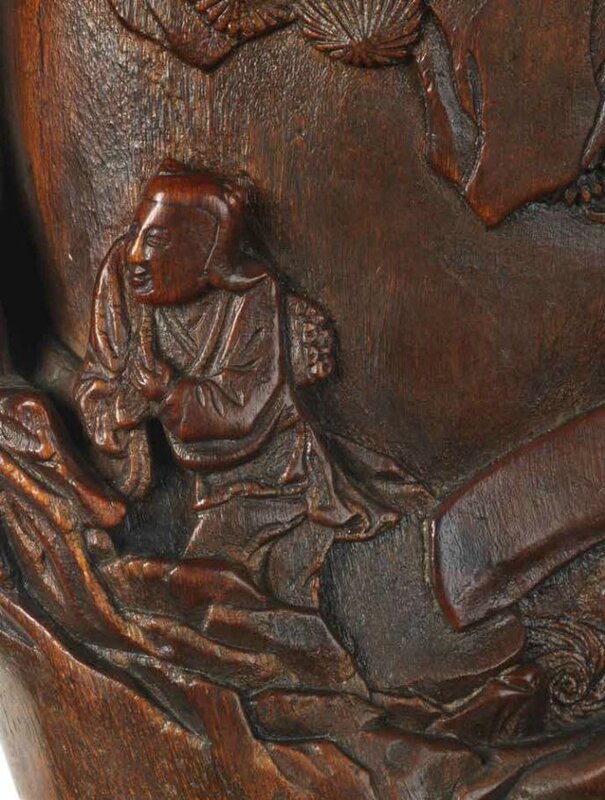




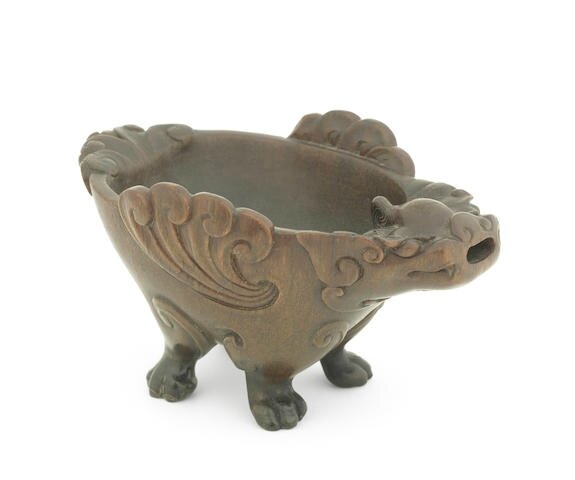


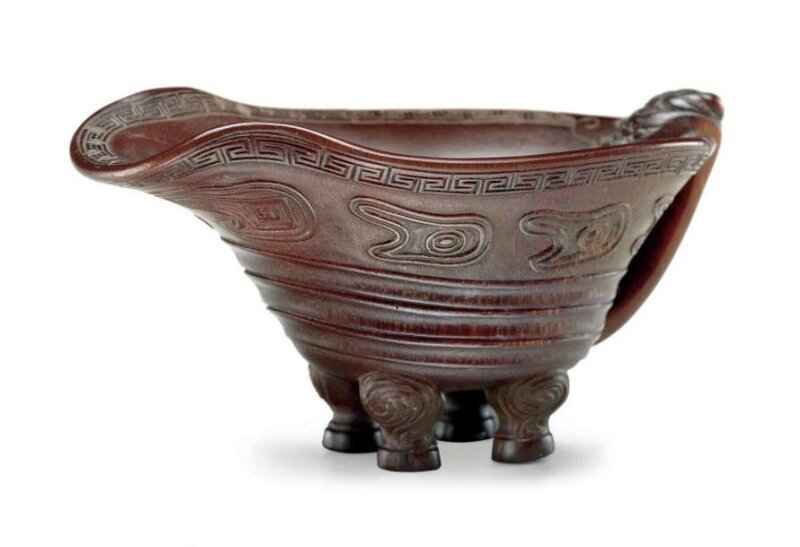

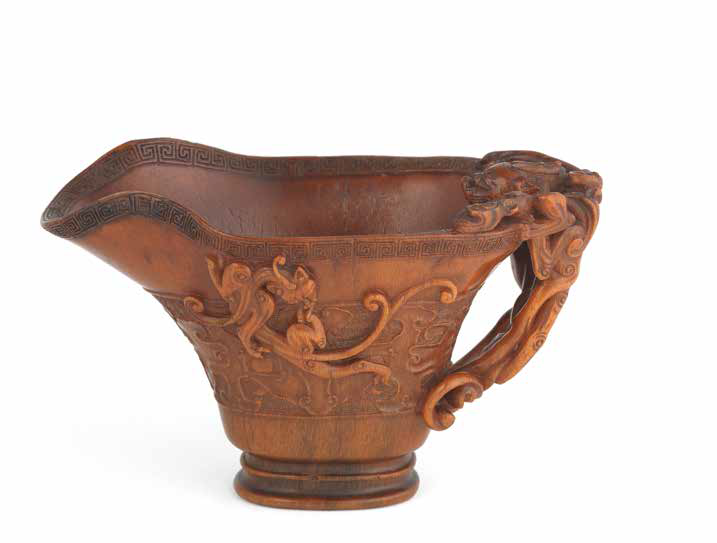







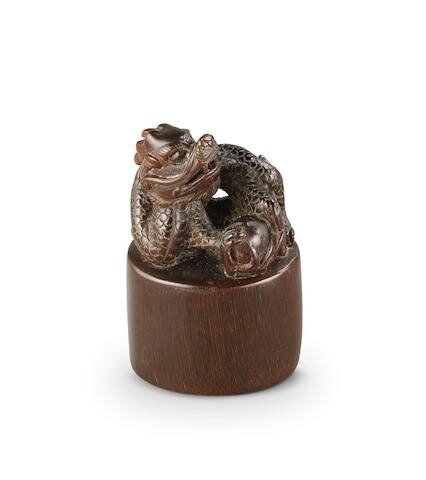
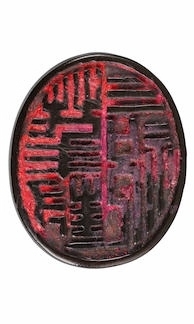

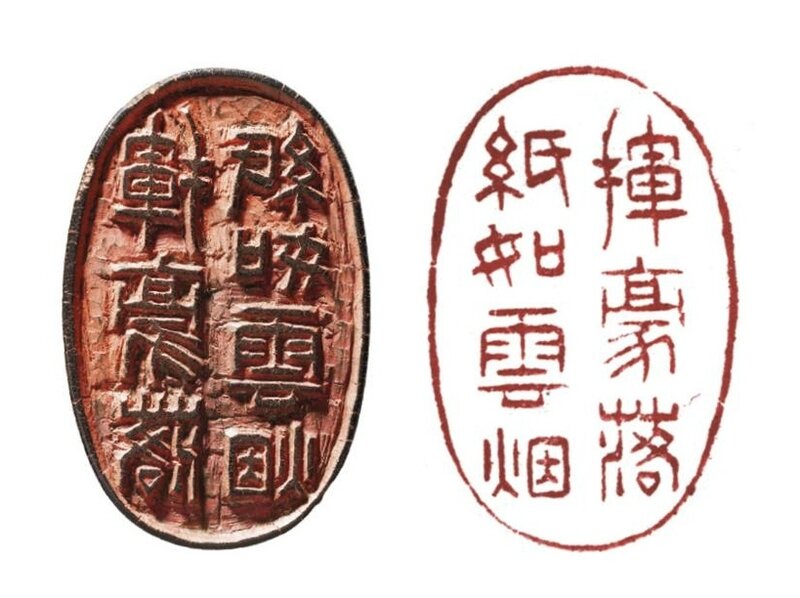


/http%3A%2F%2Fstorage.canalblog.com%2F21%2F96%2F119589%2F129836760_o.jpg)
/http%3A%2F%2Fstorage.canalblog.com%2F33%2F99%2F119589%2F129627838_o.jpg)
/http%3A%2F%2Fstorage.canalblog.com%2F07%2F83%2F119589%2F129627729_o.jpg)
/http%3A%2F%2Fstorage.canalblog.com%2F28%2F37%2F119589%2F129627693_o.jpg)